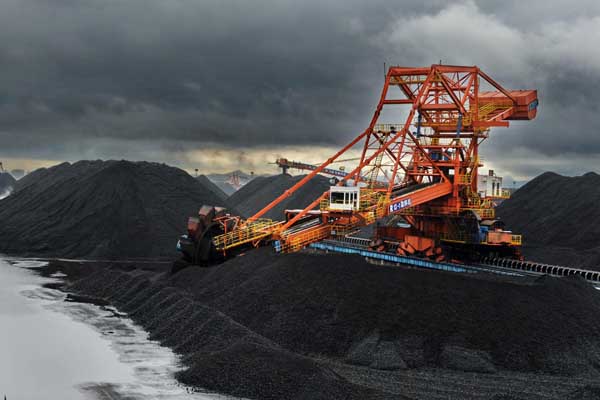Coal barons struggle amid falling coal prices
(Xinhua) Updated: 2012-07-26 10:55TAIYUAN -- A slowing economy and waning demand for coal have triggered an 11-consecutive-week price drop after a decade of robust development, arousing great concerns among China's coal enterprises.
However, industry analysts believe the situation for the world's largest coal consumer and the third-largest reserver won't last long, although more imports, less consumption and poor economic prospects threaten to sap demand.
|
 Coal piling up at the Qinhuangdao Port in Hebei province, July 15, 2012. [Photo/Xinhua]
|
The China Coal Price Index shows that China's benchmark power-station coal price fell for the 11th week as stockpiles at the Qinhuangdao Port in Hebei province, which boasts one of the country's highest export volumes, rose the most in six months on slowing demand.
Coal with an energy value of 5,500 kilocalories per kilogram slid by 1.96 percent to 641 yuan ($100) per metric ton after 10 weeks of decline, data from the China Coal Transport and Distribution Association showed.
According to the CCTDA report, in the last two months, the price slumped 23 percent from the same period in 2011, indicating unusually weak industrial demand.
Sales of coal resources in coal-rich regions such as Shanxi, Shaanxi and Inner Mongolia have been seriously affected as a result.
Guo Xutian, CEO of Xinshi Coal & Coking Co Ltd, in north Shanxi province, China's second-largest coal production base, said the entrapped coal mine selling has resulted in lay-offs for two-thirds of workers.
"Sales were never a problem, but now, look at the coal piling up on the ground," Guo sighed, saying the company has been on limited production since April. "The price dived by 80 yuan to 120 yuan a metric ton, even though we didn't put the brakes on production. We are barely making ends meet, gaining zero profit," said Ma Zhi, chairman of Jinhuagong coal mine's trade union with Datong Coal Mine Group.
Chinese demand for coal, which fuels three-quarters of the nation's power plants, has slowed as the cooling economy curbs electricity consumption.
China's power generation rose 0.7 percent in April from a year earlier, according to the National Bureau of Statistics. That was down from 7.2 percent in March and marked the slowest pace of growth in three years.
Thermal power-generated electricity, which accounts for over 60 percent of overall electricity generation, climbed 4 percent in the January-May period, indicating a strong sign of decline compared to 7 percent in the same period last year. Water-generated electricity consumption rose by 35 percent in the southern regions.
- China introduces green bond in interbank market
- You've got mail, but probably safer to keep it hush-hush
- China Railway 20 Bureau Group prioritizes overseas push
- South Korea medical workers allowed to work in China
- Beijing, Seoul start new chapter in trade
- South Korea apparel to add a touch of elegance
- Thermo Fisher sees silver lining amid growing haze
- Insurance funds on prowl for undervalued companies















